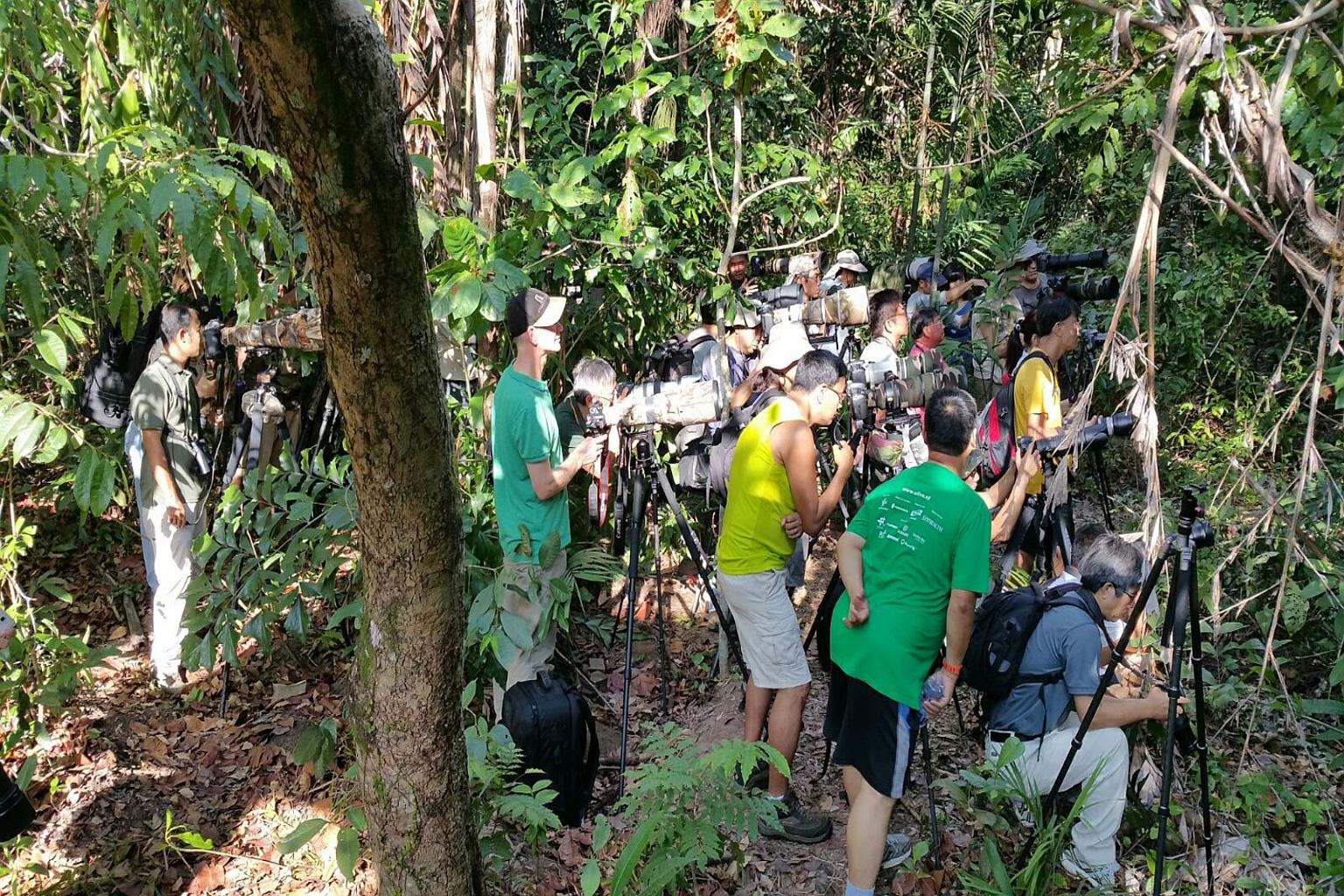3 common disruptive practices
Sign up now: Get ST's newsletters delivered to your inbox

Photographers venturing off the boardwalk at the mangrove area in Pasir Ris Park to take photographs of a juvenile common flameback woodpecker earlier this year.
Follow topic:
Feeding
One of the most widespread practices in nature photography, it involves putting out food to attract birds, so that photographers can capture "food in mouth" shots. Common bait includes mealworms or crickets to attract birds that feed on insects, and fish for piscivores.
National University of Singapore bird researcher David Tan said the practice poses problems: store-bought bait tends to lack the nutrients needed for a balanced diet, and feeding can modify the birds' behaviour and make them more susceptible to poaching.
Playback
The use of recorded bird calls to get birds to come closer is controversial. Scientists also do this to study bird behaviour, but when playback is used excessively, such as when large groups of photographers do so continuously, there could be negative impact.
A paper in science journal PLOS One in 2013 noted that "playback could negatively affect species if they become stressed, expend energy, or take time away from other activities to respond to playback".
Damaging the habitat
Photographers sometimes venture off boardwalks or they clear vegetation around a perch to get better pictures. The latter is sometimes known as setting up a "studio", which usually involves the use of bait. Litter is also prevalent in such set-ups.

